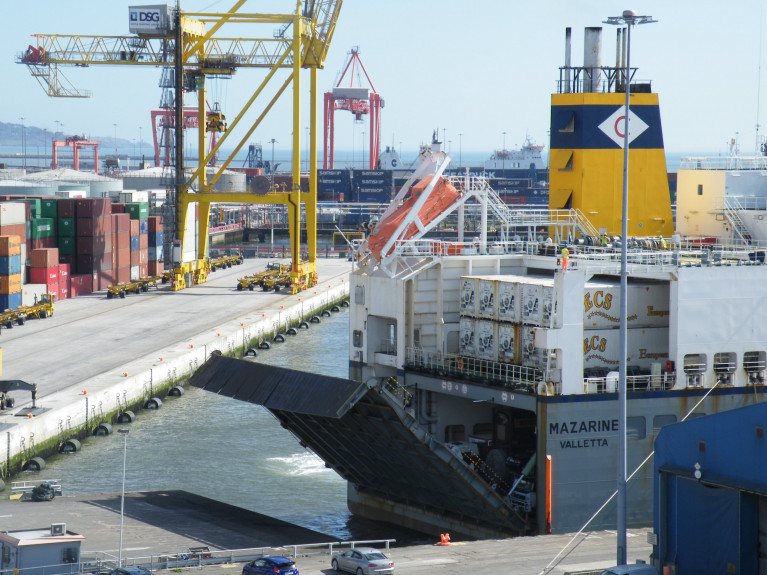Displaying items by tag: CLdN roro
Afloat can reveal that a new freight-ferry route calling to Dublin Port is to be introduced by CLdN ro-ro SA as part of their expansion of existing network which is to involve linking Spain via the UK, writes Jehan Ashmore.
According to CLdN, the new service will provide one sailing per week from Santander to Liverpool, followed by calling to Dublin. The operator already has routes linking the Irish capital connecting Zeebrugge and Rotterdam.
This is the first pure ro-ro service of what the operator describe as a triangular trade service to Santander that is scheduled to start next week.
Also this is the first service for CLdN to call to a west UK port as otherwise CLdN and their Colbefret operations use several ports in south-east England also connecting mainland Europe.
The new service connecting Spain directly to the UK and Ireland is for un-accompanied trailers, containers, vehicles and project cargo.
In addition the service according to the land-locked private operator based in Luxembourg, will offer a very green and efficient solution to the alternatives. This will cut down on excessive road and sea miles for the trailer business especially. This is to be achieved by using the shortest, most direct route and avoiding channel and road trips.
The news follows CLdN other new Belgium-Port of Cork ro-ro route launched in late April. On that occasion Afloat reported the arrival from Zeebrugge of Mesuline to Cork Harbour with the maiden sailing on the service undertaken by the 1999 built freighter.
By coincidence, Mesuline was also used to inaugurate the Dublin-Zeebrugge-Rotterdam route.
It is more than a decade ago when CLdN made a presence in Dublin Port with the inauguration of theses routes to Belgium and the Netherlands. This following the withdrawal of their services when based out of Rosslare Europort.






























































